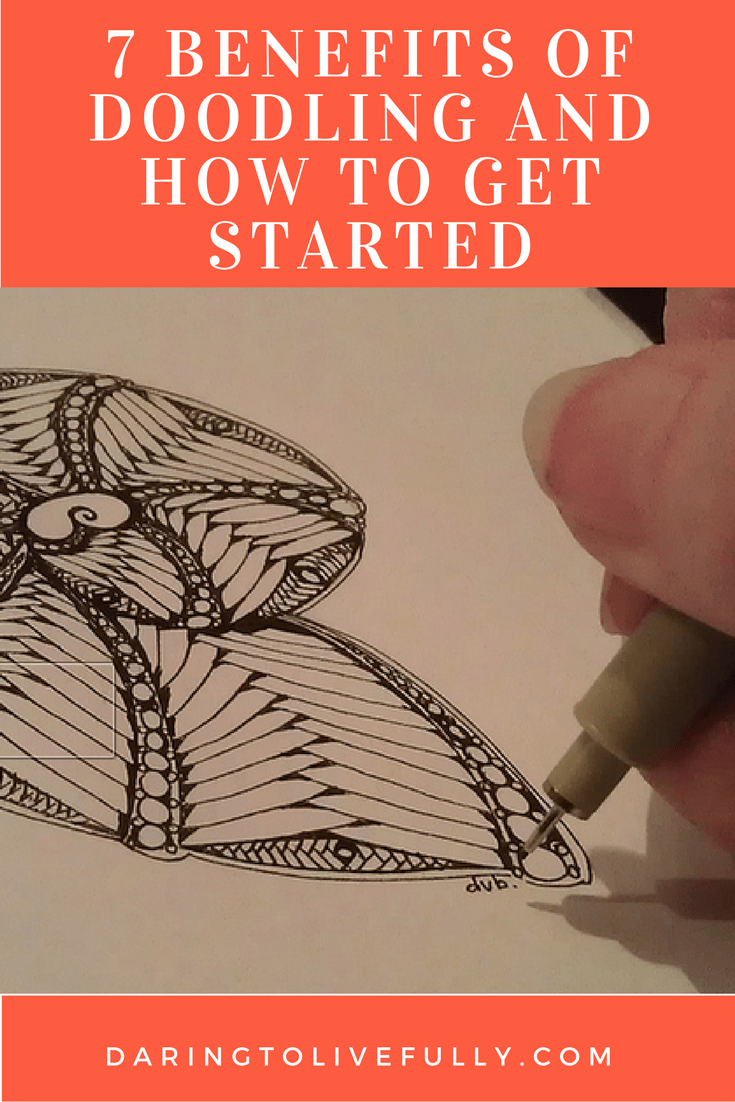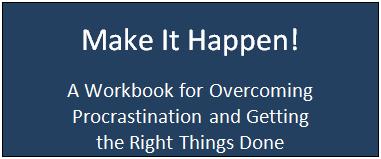
The need to draw may be hardwired into the human brain.
When I worked for the Panama Canal Commission–the US agency that ran the Panama Canal before it was transferred back to Panama in the year 2000–I would often glance over at the general counsel’s legal pad and notice that the margins were filled with doodles.
As he took notes during meetings or phone calls, or as he strategized on how to handle a legal case, he would also doodle. Since he painted during his free time, his doodles were quite good.
 It turns out that he was on to something. While doodling tends to get a bad rap–in school teachers often reprimand students who are doodling and exhort them to stop goofing off and pay attention–recent studies have found that doodling has many benefits. Among other things, doodling is associated with more effective learning, increased productivity, and better performance. In addition, you don’t have to be an accomplished painter–or even know how to draw–in order to start doodling.
It turns out that he was on to something. While doodling tends to get a bad rap–in school teachers often reprimand students who are doodling and exhort them to stop goofing off and pay attention–recent studies have found that doodling has many benefits. Among other things, doodling is associated with more effective learning, increased productivity, and better performance. In addition, you don’t have to be an accomplished painter–or even know how to draw–in order to start doodling.
Below you’ll find several benefits of doodling, and some tips on how to get started making your own doodles.
Seven Benefits of Doodling
Doodles are spontaneous uncensored marks that are made quickly and can take many forms, from abstract patterns or designs to images of concrete objects. However, these marks are far being the mindless scribbles of a distracted mind. Doodling has cognitive and emotional benefits.
Here are seven benefits of doodling:
1. Doodling Helps You Concentrate.
In a study published in 2009 in the journal Applied Cognitive Psychology, psychologist Jackie Andrade of the University of Plymouth in southern England showed that, after a lecture or a meeting, those who doodled remembered more information than the non-doodlers. In the study, Andrade separated 40 participants into two groups of 20 each.
All 40 participants had just finished an unrelated psychological experiment, and they were tired and wanted to go home. However, they were asked to spend five more minutes on another experiment.
As part of this additional experiment they were asked to listen to a 2½-minute voicemail in which the speaker rambled on about several different topics, and also spoke about a birthday party and who was invited. The voicemail was extremely boring and monotonous, by design.
Twenty of the experiment participants were asked to quickly shade in some little squares and circles on a piece of paper while they listened. The other 20 didn’t doodle. All of the participants were asked to write down the names of those coming to the party as they listened to the voicemail. This meant that the doodlers were switching between doodling and writing down the names of the guests.
Afterwards, the papers were removed and the 40 volunteers were asked to recall the names of the people attending the party, as well as some of the other information included in the voicemail. The doodlers recalled 7.5 pieces of information (out of 16 total) on average, which was 29% more than the average of 5.8 recalled by the nondoodlers. In other words, doodling helps you to concentrate.
Andrade theorizes that doodling helps you to concentrate because it requires enough cognitive effort to keep you from daydreaming, and yet not enough to prevent you from paying attention to what is going on around you. In other words, one of the benefits of doodling is that it helps you to anchor your attention and stay engaged instead of zoning out.
2. Doodling Can Help Spur Creative Insight.
According to Sunni Brown, author of “The Doodle Revolution: Unlock the Power to Think Differently“, doodling is thought to stimulate areas of the brain which normally remain dormant when you’re just in linguistic mode. This can help you to analyze information differently.
According to Brown, when you doodle “you are lighting up different networks in the brain” and “engaging different information.” This can lead to “ah-ha” moments when the solution to a problem you’ve been struggling with suddenly becomes evident.
In fact, Brown’s professional work includes training company managers to translate ideas and concepts into doodles–or visual language– in order to spark ideas and improve communication.
Doodling is thinking in pictures. The next time you’re stuck on a problem, try expressing the problem as a doodle and notice what ideas pop up into your mind.
3. Doodling Can Help Process Emotions.
Emerging studies show that art expression may help individuals reconnect thinking and feeling. While journaling is a great way to get in touch with your thoughts and feelings, you can get even better results if you add doodles to your journal entries. After all, doodles can help you to recognize and express your emotions.
4. Doodling Alleviates Stress.
In my post on ways to play more and have more fun as adults, I encourage you to get a coloring book for adults. But coloring books aren’t just for fun. The stress-busting benefits of coloring books have been proven to calm the amygdala, the part of the brain that controls our fight or flight response.
However, doodling might be even better than coloring books for getting stress under control because of its simplicity.
In the book Chilling Out: The Psychology of Relaxation, psychologist Christine Selby recommends drawing a continuous line across the page that curves and crosses itself many times as a technique to help you unwind. You can then use a different color to fill in the blank spaces created by the lines.
The repetitive motion of moving the pen across the page making the same shape over and over again is relaxing. In addition, a lot of stress comes from the fear of making a mistake, and, when you’re just drawing a continuous line and shading in wherever the mood strikes you, there are no mistakes.
5. Doodling Can Be A Creative Outlet.
Creativity is proven to boost relaxation, happiness and even problem-solving skills. However, few of us have a creative outlet that we engage in consistently. Doodling is the answer to this dilemma. It can be done anywhere and at any time, and all you need is a piece of paper and a pen.
If you’re looking for a simple creative outlet without a steep learning curve, start doodling for five minutes a day. Doodling is fun and can be very satisfying.
6. Doodling Can Help You Learn Better.
As I’ve written previously, I’m currently working on an eBook on rapid learning. During my research I came across the concepts of focused thinking and diffused thinking. Both forms of thinking are important for effective learning.
Focused thinking, as the name implies, is when you’re concentrating on the information that you’re trying to learn, analyze, or understand. Diffused thinking, on the other hand, is a more relaxed thinking state, one the brain settles into at resting. It allows for the subconscious incubation of ideas and information.
After a while of focusing intently on a subject that you’re trying to learn, sit back with a pen and paper and relax your mind–that is, enter the diffused mode of thinking–by doodling. You’ll learn better.
In addition, as was mentioned in the first point above, doodling helps you to concentrate. So, if you find your mind wandering during a lecture, start doodling in the margins of your notes in order to bring your mind back to the attention sweet-spot so you can listen to the lecture, and learn.
7. Doodling Helps Big-Picture Thinking.
Philosopher Jesse Prinz, a professor at City University of New York, explains that when you’re too focused on something you tend to overthink. This can lead you to focus on details that aren’t particularly important and miss the big picture. Think of the saying, “miss the forest for the trees”.
When you doodle you tend to focus on the overarching ideas and concepts, which is paramount to big-picture thinking. Therefore, the next time you feel yourself drowning in details, stop for a moment and create a doodle that represents whatever it is that you’re working on. It’s highly likely that you’ll find yourself regaining perspective.
How to Start Doodling
One of the best things about doodling is how easy it is to do. In fact, you can get started doodling even if all you know how to draw are stick figures. In addition, you’ll still get all the benefits of doodling even if your doodles are “ugly”. Here are five ways to get started with doodling:
1. Learn the 12 Basic Shapes.
Brown, who has already been mentioned, teaches her clients 12 basic shapes so that they can start doodling as fast as possible. The shapes consist of dots, lines, angles, spirals, and triangles. It’s a visual alphabet, if you will, which will allow you to draw anything. Here are the 12 shapes:

2. Use Stencils.
If you’re not ready to draw your own shapes yet, use stencils. Get yourself some nice stencils, such as these or these. Then, just trace the shapes and add your own doodles inside or outside the stencil shapes.
3. Follow Along With a YouTube Video.
There are lots of good doodling tutorials on YouTube which you can easily follow along with, even if you’re a beginner. Here’s a good one:
4. Get a Doodling How-to Book.
Whatever you want to learn how to do, you can bet there’s a book for it, and doodling is no exception. In fact, since doodling has become very popular recently, there are now several great doodling books available for you to choose from. Here are four good ones:
5. Doodle Freestyle.
Just grab a pen or a pencil, and paper, and allow your mind to take over. Think of a journal entry in which you allow yourself to ramble, except that you’re using lines and shapes instead of words. Don’t get hung up on trying to draw any particular image–images will start to take shape as you move the pen over the paper.
In addition, don’t allow your inner critic to get in the way. Nobody has to see your doodle, and you can just crumple it up and throw it away when you’re done. Give your mind and hand free rein. You can even try doodling in the dark.
Conclusion
As you can see from the explanation above, doodling has many benefits, and you can get started right away. Live your best life by doodling. Now, go doodle and begin to experience the many benefits of doodling right away!





Related Posts:
- 14 Brilliant Uses for Mind Maps – Engage Your Whole Brain
- 20 Creative Projects to Reawaken Your Right Brain
- How to Laugh More – 22 Ways to Bring More Laughter into Your Life
Did you enjoy this article? Subscribe to “Daring to Live Fully” by clicking here and get free updates.




 Marelisa Fabrega is a lawyer and entrepreneur. She holds a Bachelor of Science in Business Administration from Georgetown University in Washington, D.C., as well as a Juris Doctor from the Georgetown University Law Center. You can learn more about her
Marelisa Fabrega is a lawyer and entrepreneur. She holds a Bachelor of Science in Business Administration from Georgetown University in Washington, D.C., as well as a Juris Doctor from the Georgetown University Law Center. You can learn more about her 





